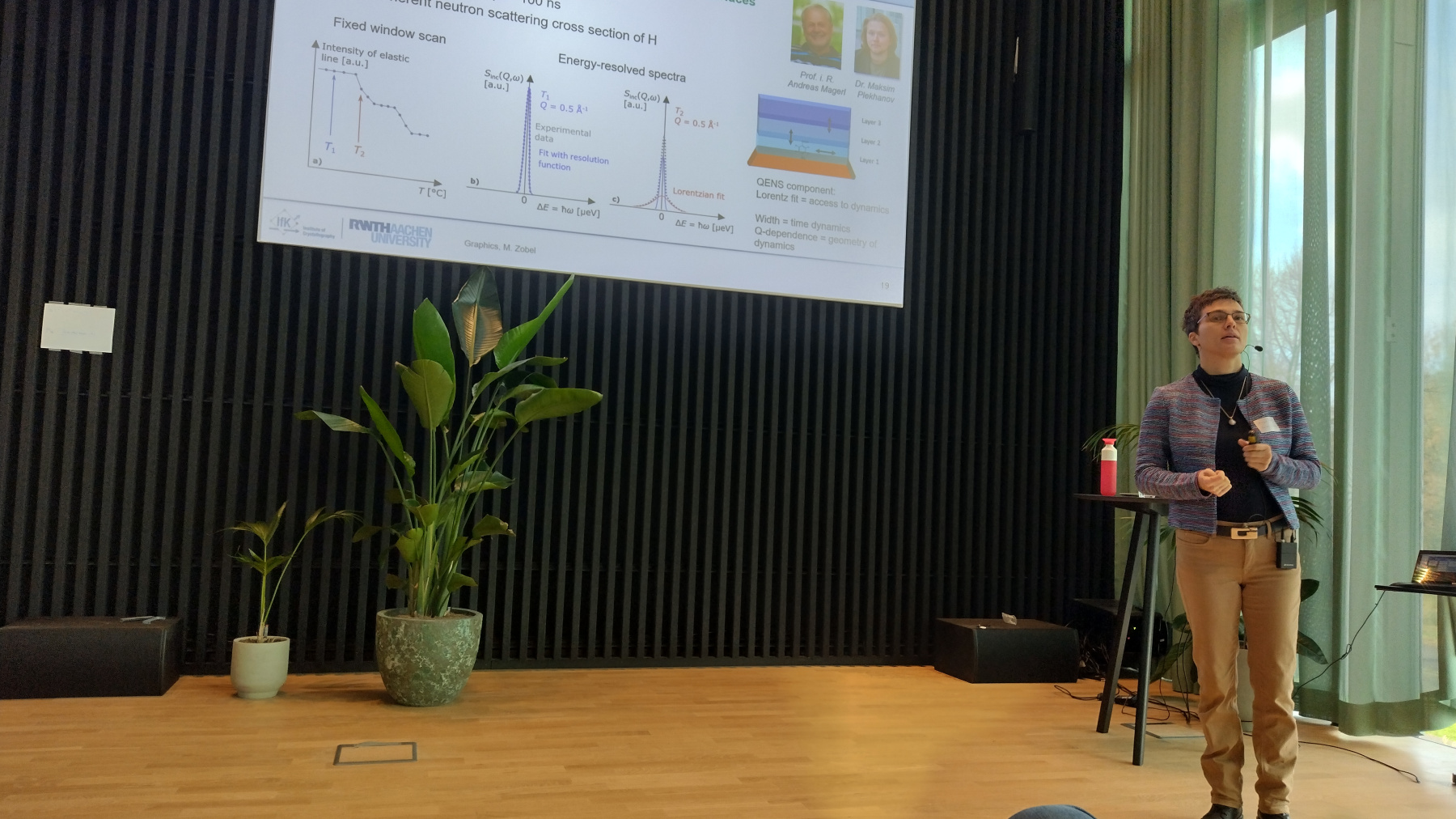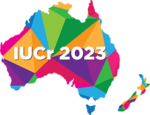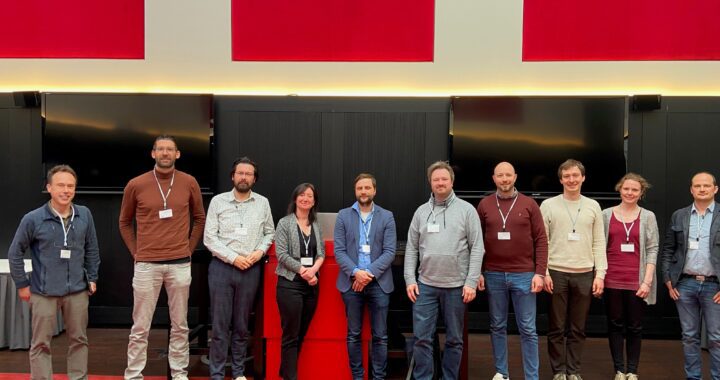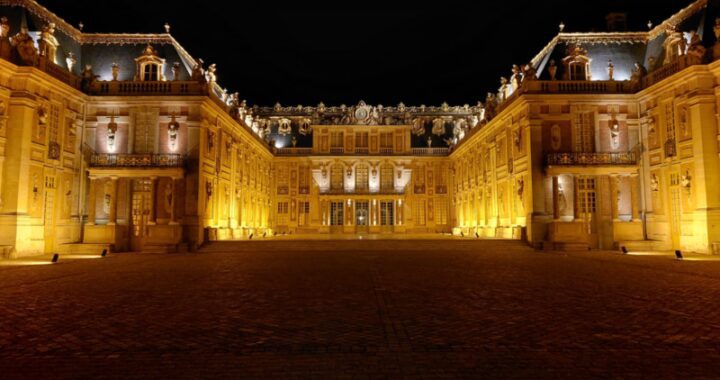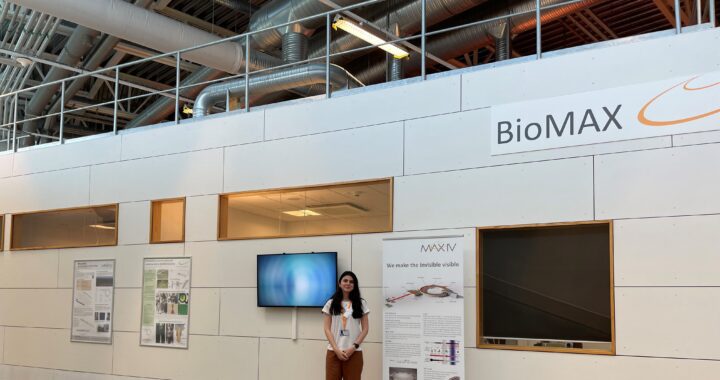From 15-17 January we had the first “The Basics of Crystallography” course. The goal of the course was to learn PhD students the background of crystallography and make them understand more of what is behind the methods and (easy-to-use) software. The course aimed at two disciplines: powder and single crystal diffraction. There were 18 participants. We had lectures in the morning and (computer) practicals in the afternoon. The ambience was very good and the students were very involved. The hard work was intermitted with two diners and a pub quiz which contributed to the a pleasant atmosphere. All-in-all we believe is was a very successful event.
Category Archives: Event reports
Reports of members that joined events organized by the NVK or third parties
NVK symposium was a great success!
On 24.11.2023 we held our annual general meeting of the NVK (ALV) at the Amsterdam Science Park organized by Roland Bliem and the ARCNL institute. Apart from the official ALV, the day was full of scientific talks and exchange, as we embedded it into our autumn symposium, this year on the topic of ‘Crystallography in Materials’. We had an exciting panel of speakers especially Ruud den Adel (Unilever), Tom de Vries (Nijmegen), Mirijam Zobel (Aachen), Alexey Pustovarenko (Malvern Panalytical), Adrian Graham (ESA/ESTEC) and Jarek Mazurek (Ardena).
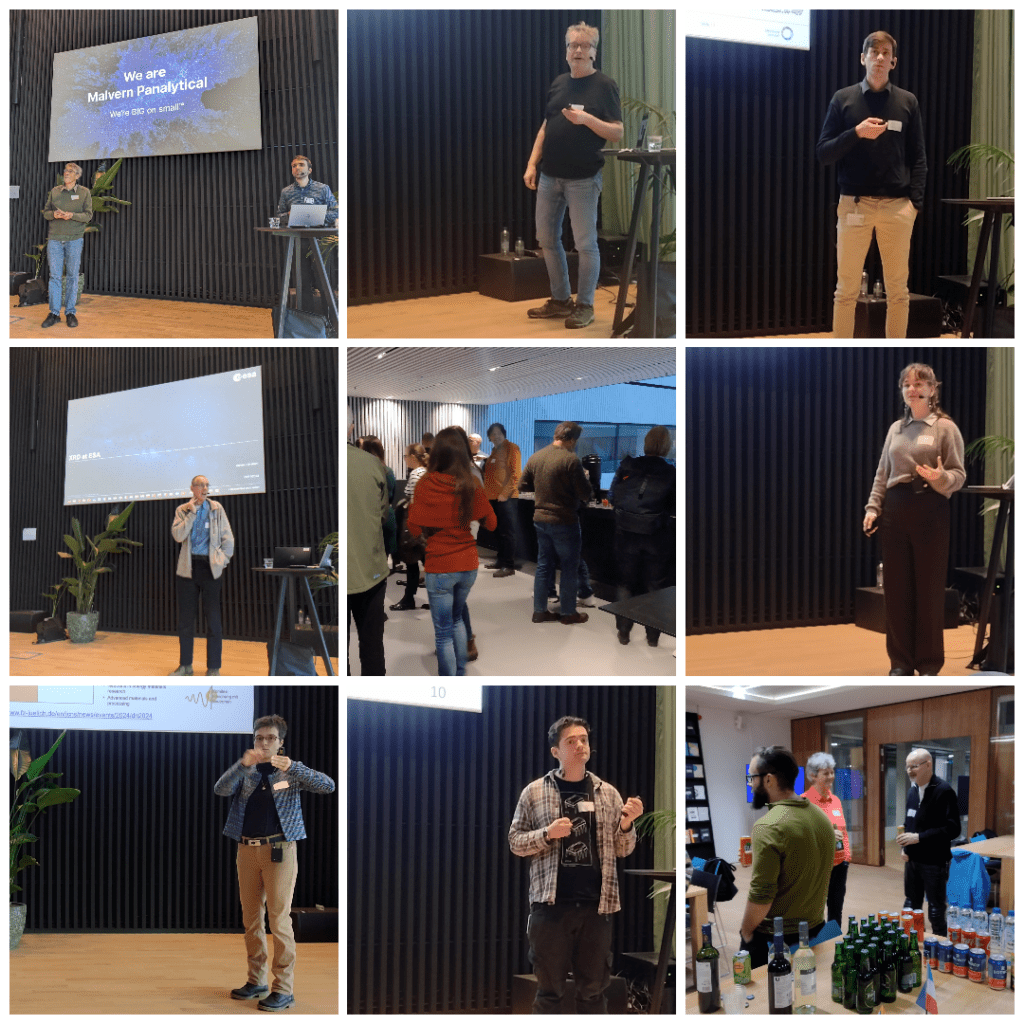
A sphere impression of the day!
Special thanks belong to our speakers of the young researcher session (Grisha Shipunov (UvA), Falk Pabst (UvA) and Charlotte Vrolijk (Maastricht)), which was a great success and gave our next generation researcher a platform to discuss their achievements.
Find the full program here. If you got curious, please join our next Symposium in Spring 2024! Details will follow.
Loes reports on the IUCr Congress and General Assembly in Melbourne
By: Loes Kroon-Batenburg
The triannual IUCr congress was held this time 22-29 August, 2023 in Australia, a long-distance travel for most crystallographers. The number of attendees was a bit lower than usual (~1800) but still respectable. This year the 75th Anniversary of the IUCr is celebrated. A very well attended session was devoted to short talks by several Executive committee members and IUCr officers giving their memories on the rich history of the IUCr.
13th Ewald Prize Lecture went to Wayne A. Hendrickson who delivered his lecture “Facing the Phase problem”. In his work he contributed to solving the phase problem for protein crystal structures with MAD and SAD techniques. He also mentioned the importance of the work of Prof. Bijvoet on anomalous scattering, our founding father of crystallography in the Netherlands. There were three plenary lectures, 29 key notes lectures and 8 parallel micro symposia, twice per day. In addition, there were poster sessions and the Software Fayre (organized by Martin Lutz) was running each day. One of the keynote lectures was given by our member Elias Vlieg (RU Nijmegen) on “X-ray crystallography of solid-liquid interfaces”. He showed very interesting phenomena are going on at crystal surfaces that can be well studied with X-ray crystallography. Elias is president of the DAGG, the Dutch Association of Crystal Growth, and I am happy to let you know that next year we will have a joint NVK-DAGG meeting!
The delegates were no longer provided with program and abstracts on paper; they were accessible through a congress app. Although quite handy to not be dragging around a heavy bag, it was very hard to really get a good overview of what was going on each day. The conference center was huge. When I arrived the first day and entered the front door, it turned out I had to walk another 1 km inside the building to arrive at the reception desk. It was very pleasant to meet colleagues in real life, talk to them over coffee and have lively discussions. It is a relive after having had the Corona restrictions. The exhibition was not as large as usual, surely because of the costs involved in traveling and exporting material to Australia. However, happily, a good number of sponsors were present anyway; I find the exhibitions are always the heart of the meeting. There was also a cute fluffy guest that could be petted.
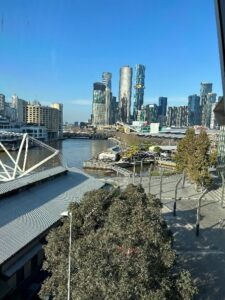
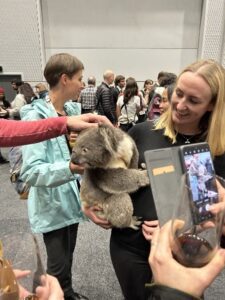
Martin Lutz and I were the Dutch National Committee representatives to the General Assembly and we had three long evenings discussing withdrawal of adhering bodies (mostly for financial reasons), voting for nominations of commission members and notably the admission of The African Crystallographic Association (AfCA) as a Regional Associate of the International Union of Crystallography. There was also a report about the achievements of the various IUCr journals, a very important source of income for the IUCr. The next IUCr meeting will be in Calgary in 2026 and it was decided that the 28th IUCr congress will be held in Berlin in 2029.
The winters in Melbourne are not that bad, just like a poor summer in the Netherlands, so it was nice to walk back and forth to the conference center which was located on a relaxed pedestrian area with cafés and restaurants close to the Yarra river. All in all, I found the very long traveling time was worth the effort!
Sven enjoyed the NVBMB spring symposium
By: Sven Hennig
On Friday, 12.05.2023 the 2023 NVBMB Spring Symposium was held in Groningen. The topic of this spring centered around Recent Advances Structural Biology and included many scientific achievements using different techniques and sub-types of Crystallography, NMR and Electron Microscopy. I was invited to give a talk on our developments in modulating transcription factor protein-protein interactions (Jeganathan & Wendt et al.) and was happy to join. The Spring Symposium also served as a kick-off meeting for the Structural Biology Platform (centered around Dirk Slotboom, Bert Janssen and Albert Gustkov), an interest group of Dutch structural biologist established in 2023 and serving as a platform to organize, discuss and exchange.
The NVBMB chair Luc Brunsveldt used the chance and valued the PhD work of Rebecca Halbach (Ronald van Rij and Pascal Miesen, Dept. Medical Microbiology and the Radboudumc Research Institute of Radboudumc) on piRNAs on vector mosquitos by awarding her the Westenbrink Price.
Overall a very nice event, well organized and full of scientific an structural interactions.
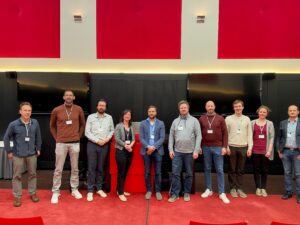
On the photo you see all people that provided a talk or otherwise contribution to the NVBMB spring symposium.
Report of ECM33 in Versailles by Loes
The 33 European Crystallographic Meeting (ECM33) was held in the Palais des Congres from 23-27 August in Versailles. As always, a broad range of microsymposia was offered that were proposed and organized by the SIGs and Gigs (special/general interest groups) of the ECA. In addition, there were 16 keynote and 2 plenary lectures. The subjects range from the X-ray investigation of batteries for energy storage, total scattering studies and diffuse scattering, crystal engineering, quantum crystallography, software development, 3D electron diffraction, large scale facilities, serial crystallography and time resolved studies as well as fold prediction of proteins. The commercial exhibitions allow one to get informed on the latest developments in equipment and techniques. Many of the companies are indispensable sponsors for the ECM organization.
The building presented a challenge to find the lecture rooms, with many stairs leading to the wrong side of the building and even the wrong floor. Apart from that the location was superb, just opposite the Chateau de Versailles, which is amazingly large, even if you know that.
This year it was the celebration of 25th anniversary of the ECA. There was a special celebration session, where almost all of the past presidents said a few words about their experiences. The session started with our member Paul Beurkens who was one of the co-founders of ECA. It was a great achievement to remodel the somewhat loose ECC that had been responsible for organizing the ECMs before. As it happened it was (almost) 50 years ago that the first ECM was held in Bordeaux. The ECA has national members, which are usually national crystallographic associations, like our NVK. Aside from that, crystallographers can also become individual members, and these are entitled to become member of the SIGs and have some other privileges.
There were almost 900 participants, so that is a success for the organization. It was very rewarding to meet colleagues in person again, after all the corona restrictions.
By: Loes Kroon-Batenburg
Canan Durukan enjoyed summer school at MAX-IV
Hello from Amsterdam! My name is Canan Durukan. Right after obtaining my master’s degree in Chemistry in Istanbul, Turkey, I started my PhD in Sven’s Lab at VU Amsterdam in summer 2020. My research focus is on bimolecular interactions and their modifications, specifically for protein-protein interaction modifications of the NF-Y transcription factor. The major part of my work so far was the study of proteins and ligand binding. It is both interesting and fun to carry out research about proteins and discover this complex world of proteins and crystallography.
Last June I attended a summer school about data collection and structure determination in macromolecular crystallography at MAX IV which is organized by MAX IV Laboratory and Aarhus University. There were both theoretical lectures given by international experts and practical exercises. It was pretty exciting and inspiring to be among the participants and have a chance to meet a group of experts in their field with great insights and having heard about their knowledge and experiences as well as being at a synchrotron and meeting beamline scientists. I do believe that these organizations, in which scientists from different places come together for sharing and exchanging knowledge, are very encouraging and valuable. We are mostly focused on our own work and these occasions help us step back and consider the big picture by seeing what everyone else is doing.
I joined the NVK Young Researchers Retreat last September. It was nice to meet researchers in Dutch crystallography association in person.
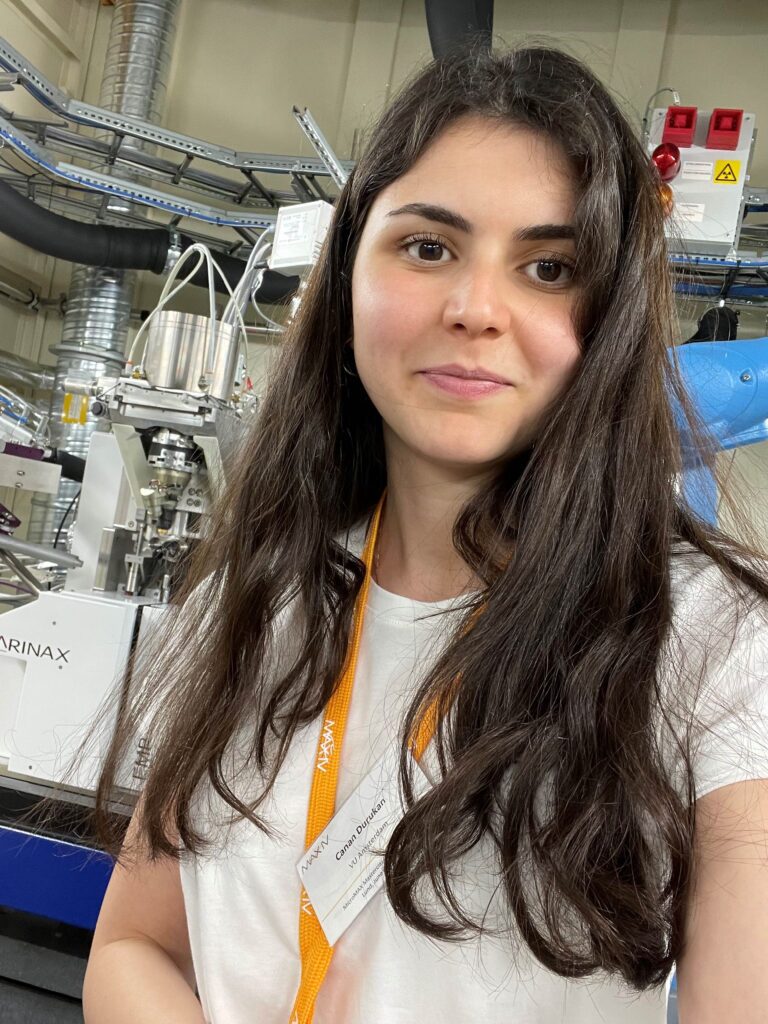
Bio: Canan graduated from Yildiz Technical University, Turkey with a bachelor’s degree in Chemistry. She then started her Master’s studies in polymer chemistry at Istanbul Technical University. After her graduation in the summer 2020, she started her PhD in Sven’s lab at the beginning of August 2020 to work on understanding protein-protein interactions and their modifications.
Positive feedback from 40 participants of Hands-On Powder Diffraction School 2017
Positive remarks, requests for more information and “who-can-help-me-with-my”s and more courses: some of reasons why the organizers are happy to have initiated this short and dense introduction to crystallography and powder diffraction. Even today we had 12 more measurements to do at our instruments in Delft to be able to “treat your own data” in the afternoon session tomorrow.
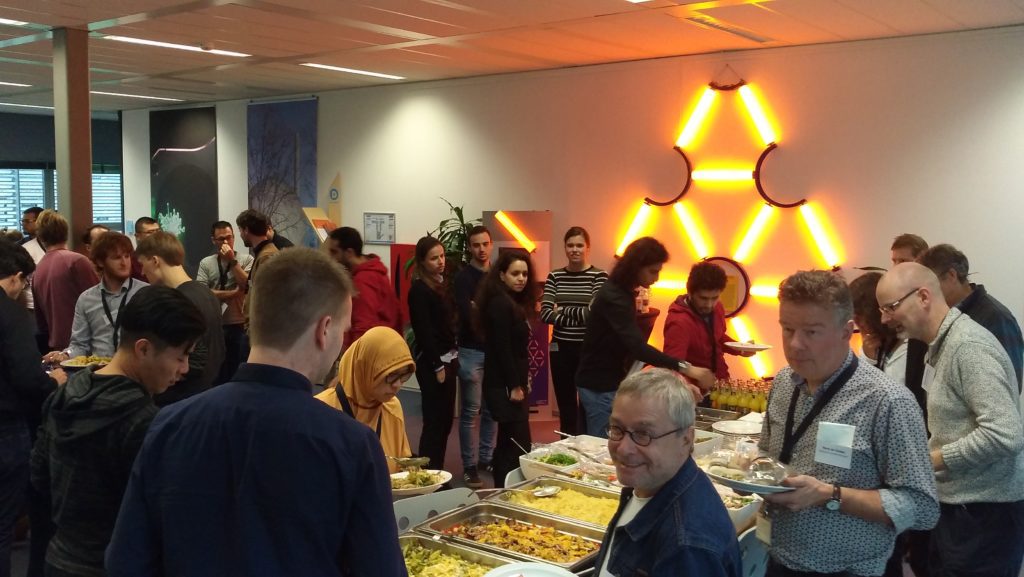
Food for Thought. Hungry scientists after the morning session of Dutch Hands-On Powder Diffraction School in Delft, 2017



